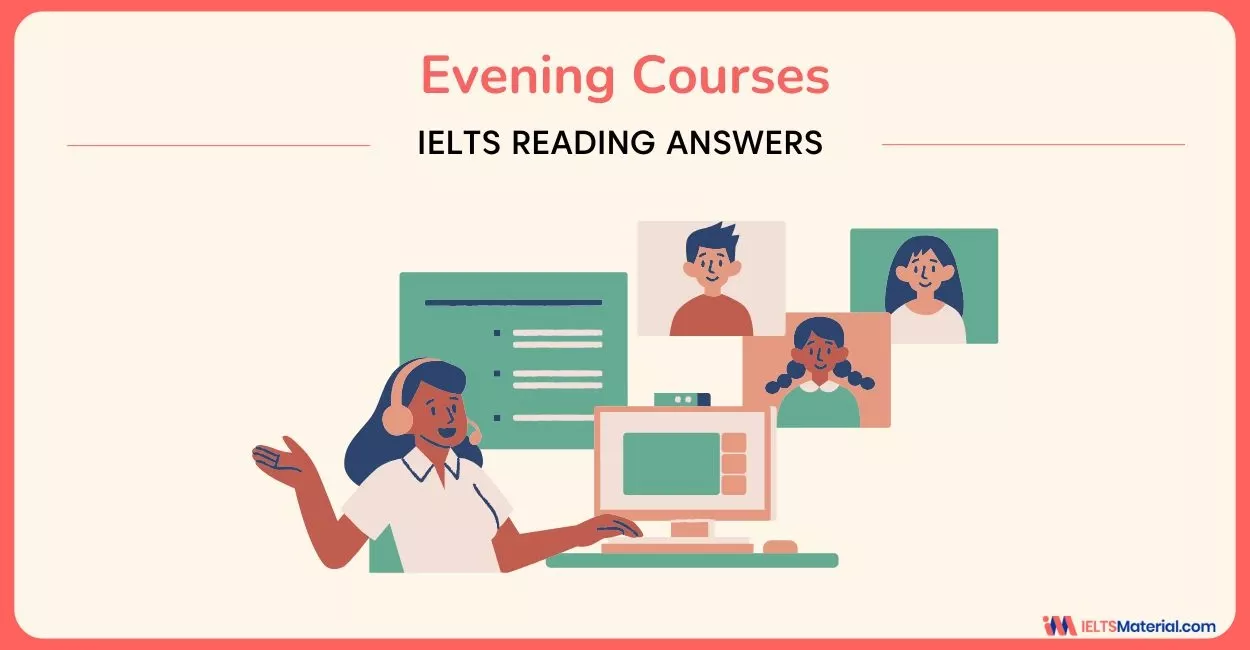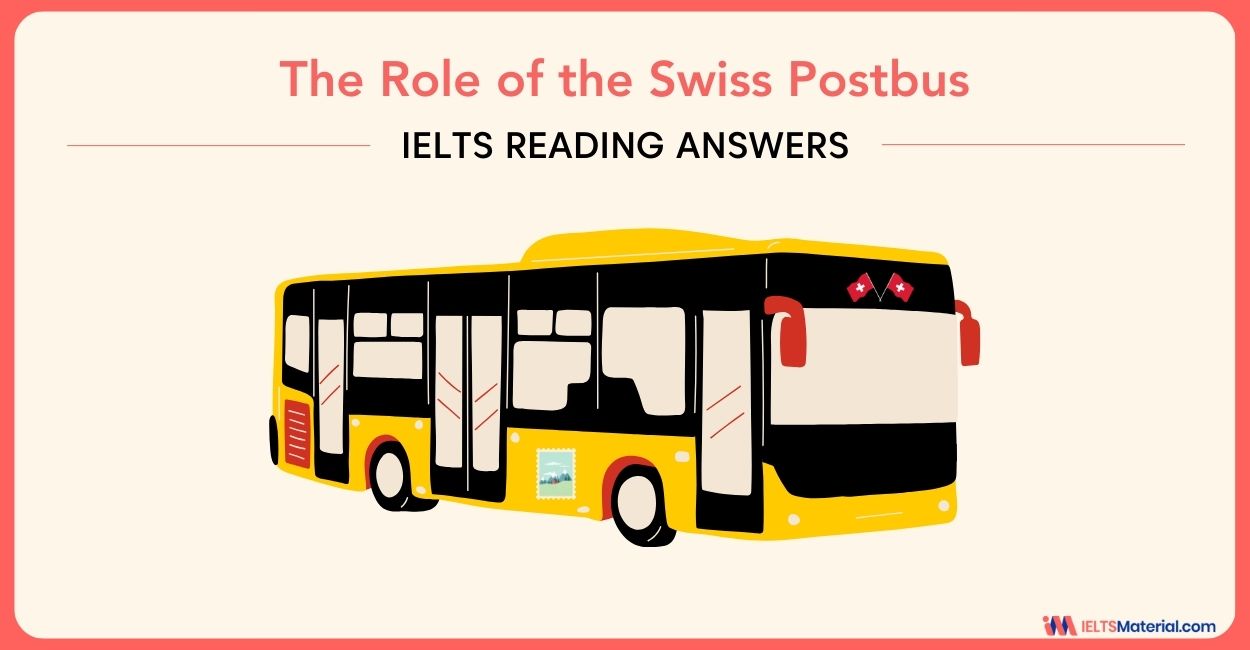National Cycle Network, Student Accommodation At Northside University and Underground Cities—Japan’s Answer To Overcrowding | IELTS General Reading Practice Test 11 with Answers
11 min read
Updated On
-
Copy link
By attempting the National Cycle Network, Student Accommodation At Northside University and Underground Cities—Japan’s Answer To Overcrowding | IELTS General Reading Practice Test 11 with Answers, you can start your preparation to ace the exam.
Table of Contents

Limited-Time Offer : Access a FREE 10-Day IELTS Study Plan!
In the IELTS exam, one of the most difficult sections would be IELTS Reading. With diligent practice and preparation, you will be able to ace the IELTS General Reading section. The test consists of 40 questions and 3 Sections where you will get only 60 minutes to attempt. In the Reading practice test on National Cycle Network, Student Accommodation At Northside University and Underground Cities—Japan’s Answer To Overcrowding, you will be able to get familiarised with the reading pattern.
To practice more, you can do so with the IELTS General Reading Practice Tests where you will be able to strategise for different types of questions.
Reading Passage 1- National Cycle Network
Questions 1- 12
Questions 1-7: Apply to the reading passage ‘National Cycle Network’
Roads For People! Help Create A
National Cycle Network
The figures speak for themselves. Over 20 million cars are registered in Britain and road traffic is projected to at least double by the year 2025.
Twice as much traffic on your roads… Imagine it!
Yet many more people would choose to make their shorter journeys by cycle—if only the road conditions felt safe.
Now, an answer to this problem is being created.
The 5000-mile National Cycle Network
For fifteen years, Sustrans—it stands for ‘sustainable transport’—has been building traffic-free routes for cyclists and walkers, often through the heart of towns and cities. Several hundred miles are now completed, using disused railway lines, canal towpaths, riversides and unused land.
As a civil engineering charity, we work in partnership with local authorities and landowners.
We are now promoting a true national network, composed of traffic-free paths, quiet country roads, on-road cycle lanes and protected crossings.
Safe cycling networks already exist in many parts of Europe—including Denmark, Germany, Switzerland and the Netherlands. Europeans are often astonished at tire road dangers we put up with here.
A Danish cyclist is ten times less likely to be killed or seriously injured— per mile cycled—than a cyclist in Britain. Extensive national and local cycle routes there are supported by slower traffic systems on surrounding roads.
A national cycle network for Britain can help transform local transport for the twenty-first century. With your help, it really is achievable! Make a donation now!
Questions 1 and 2:
1 Sustrans is ……………………
- a local authority
- a construction company
- a civil engineering charity
- a cycle network
2 How many cars are expected to be on Britain’s roads in 2025 ?
- one million
- more than 40 million
- exactly 40 million
- twice as much traffic
Questions 3-7:
3 How many miles of the network have already been completed?
4 What are other European cyclists surprised that British cyclists accept?
5 In addition to cycle networks, what does Denmark have to protect cyclists?
6 How can people help create a national cycle network in Britain ?
7 Apart from cyclists, who benefits from the work of Sustrans?
Questions 8-14:
Apply to the reading passage ‘Roads—the Facts’ on the next page. Do the following statements agree with the information given in the passage? In the boxes 8-14 on your answer sheet write:
TRUE if the statement is true
FALSE if the statement is false
NOT GIVEN if the information is not given in the passage
8 There might be three times as many cars in rural areas in 2025.
9 The levels of air pollution in British cities are often higher than the standards set by the World Health Organization.
10 More German children go to school by car than British children.
11 It is believed that pollution from vehicles can make some children’s illnesses worse.
12 Most of the national cycle network will be in country areas.
13 Most towns and cities will be only 10 minutes ride away from the national cycle network.
14 The national cycle network will cost the same as the national roads program.
Roads—The Facts
In 1994 the Royal Commission on Environmental Pollution described ‘the unrelenting growth of transport’ as ‘possibly the greatest environmental threat facing the UK’.
The Department of Transport predicts a doubling of traffic on 1988 levels by the year 2025. The Countryside Commission has warned that traffic through country areas may treble by then.
Vehicle exhaust is the major cause of urban air pollution. World Health Organization limits are regularly exceeded in most UK cities.
1 in 7 children suffers from asthma, thought to be exacerbated by traffic fumes.
Over 1500 wildlife sites including ancient woodlands and sites of special scientific interest are still threatened by road building.
Four times as many junior-age children are driven to school in Britain as in Germany, because of road dangers. In Holland 60 percent of children cycle to school—compared with only 2 per cent here.
The National Cycle Network will:
- Cater for all users—commuters, school-children, shoppers, family groups.
- Run right through the middle of most major towns and cities, enabling over 20 million people to ride to their nearest town centre within 10 minutes!
- Cost the equivalent of just a few weeks of the current national roads program.
- Be professionally designed and engineered, in cooperation with local authorities and landowners, to create high quality routes.
With your help we can build a network of commuter and leisure paths for a safer, healthier future.
Also check :
- IELTS Reading
- Tips to Improve IELTS Reading Skills
- IELTS Reading Practice Test
- True False Not Given IELTS Reading
- IELTS Reading recent actual test
- IELTS Academic Reading test papers with answers pdf
- IELTS General reading practice test
- IELTS General Training
Reading Passage 2- Student Accommodation At Northside University
Questions 15 -24
Read “Student Accommodation at Northside University” below and answer the questions that follow.
Situated about 20km from the city centre, Northside University is not easy to get to by public transport. However, students have several different alternatives for accommodation on or near the University campus.
Firstly, the University has several residential colleges; Burnside College, Boronia College and Helen Turner College. Each of these colleges provides a single fully furnished room with shared bathroom facilities, and meals. Burnside College is the most expensive, with 1996 fees ranging from $154 – $165 per week. However, each student room is equipped with private telephone and voice-mailing facilities, and within the next few months college students will have access to EMAIL, On-Line library, INTERNET and AARNET via a network with the University. Boronia College has similar room facilities but does not offer the same computer access. It also offers only 17 meals per week, compared to Burnside’s 21. Fees vary from $147 – $157 per week. Helen Turner College is a college exclusively for women, with similar fees to Boronia College. To attend classes, students have a short walk from the residential Colleges to the main University campus.
The University also provides 23 self-contained furnished townhouses. These townhouses have either 3, 4 or 6 bedrooms each and student residents are expected to be studying full-time. Rents in 1996 ranged from $54 per week for a room in a six bedroom flat to $68.50 per week for a room in a three-bedroom house. Students wanting to live in university housing should apply to the university housing office in August of the previous year, as it is in high demand. Smoking is banned in University housing.
Off campus, there are many flats, townhouses and houses for rent in the local area. These can be found by looking in the local newspaper under ACCOMMODATION, or by checking notices pinned up on the boards around the university. There are always students advertising for housemates and you can even add a notice of your own to the board. However, even sharing accommodation with others can be expensive; tenants are usually required to pay a rental bond, rent in advance, and telephone/electricity/gas bills in addition to food bills. Be sure that you know what you will be required to pay before you enter into any written agreement.
Choose the appropriate letter A-C and write it in boxes 15-18 on your answer sheet.
Questions 15 – 18
15 The University Residential Colleges provide
- a place to live and regular classes
- regular classes only
- a place to live only.
16 Smoking is
- allowed in University housing
- not allowed in University housing
- allowed only in certain areas in University housing.
17 University townhouses are available for
- full-time students only
- part-time students only
- all students.
18 Accommodation in the area surrounding the university is
- scarce
- plentiful
- scarce and expensive.
Questions 19 – 24
A student living in a 3-bedroom University townhouse would pay 19 _____________ per week for a room; in comparison, the cheapest accommodation available at Burnside College is 20 __________ per week. The fee charged at Burnside College includes 21 ______________ meals per week, but at Boronia College only 22 ______________ meals per week are included in the fee. Helen Turner College has a similar fee structure to 23_____________ College, but only 24____________ may live there.
Reading Passage 3- Underground Cities—Japan’s Answer To Overcrowding
Questions 25 – 39
Questions 25-39 are based on the reading passage below.
A nation running out of room seeks a down-to-earth solution
The Japanese may find a solution to the nation’s space shortage right beneath their feet. Some of Japan’s largest construction companies are planning underground cities that would not only ease urban crowding but also provide protection against earthquakes and increase energy efficiency.
Japan’s soaring real-estate prices provide reason enough. In a country with nearly half as many people as the United States, but squeezed onto an archipelago which is only one hundredth the size, land shortages have led to construction becoming prohibitively expensive.
Another plus for subterranean construction is that the underground earth’s movement during an earthquake is far less than the surface’s—a big consideration in earthquake-prone Japan. The devastation caused by recent earthquakes in Japan could to some extent have been avoided if much of the cities affected were largely located underground.
In addition, the near-constant temperature would reduce the fuel costs for subterranean cities. Underground areas would need much less heating in winter and much less cooling in summer.
Taisei Corporation of Tokyo is planning a network of ‘Alice Cities’, named after the fictional Lewis Carroll heroine who fell down a rabbit hole into a wonderland. Taisei proposes turning cramped downtowns into airy underground spaces connected by subway trains and subterranean roads. The cities will be designed for self-sufficiency, but could be linked to sister cities by underground railway. Although some buildings and roads would remain above ground, much surface space would be freed up for trees and public parks.
Each Alice City would be divided into three sectors. The first sector, Town Space, would comprise verdant underground boulevards and open-air and atrium-type plazas—all free of automobile traffic. These boulevards and plazas will include shopping malls, entertainment complexes and fitness centres. Secondly, the Office Space sector will house business operations, hotels and parking lots. A solar dome above each office complex will ease feelings of claustrophobia. Express elevators or an extension of the underground railway system will run to the bottom level. Some workers will ride to work vertically horn residential areas within the sector, while others will commute from the suburbs. Isolated from the town and office sectors will be the third sector. Infrastructure Space. This will contain facilities for power generation. regional heating and air-conditioning, waste recycling, and sewage treatment.
Existing cities could be redeveloped beneath the surface using the Alice system. The downtown areas could be retained above ground in a slightly modified form and most of the future growth of the cities could be accommodated underground.
An alternative to the Alice City concept is the Shimizu Corporation’s proposed Urban GeoGrid, a vast network of smaller subterranean city spaces linked by tunnels. The $80.2 billion project would cover 485 square miles and accommodate a half-million people.
The Urban Geo Grid provides for a much more complicated interaction of many underground spaces over a larger area. Each ‘grid station’—a complex of underground offices, shopping malls and hotels—would be connected to several smaller ‘grid points’, which would provide local services such as public baths and convenience stores. The Grid would provide a network for road and rail transportation, communication, and energy supply both within a city and between cities. Individual facilities for various services such as power generation and waste treatment will be on a smaller scale, but more numerous.
Whichever concept is ultimately applied, one obstacle that will need to be overcome before Japanese cities have real ‘downtowns’ involves the nation’s geology. Japan’s densely populated lowlands are mostly founded on loose geologic strata, making underground construction particularly difficult. Thus, Japanese construction firms are conducting extensive research and development on technologies for drilling, excavation and underground construction.
Some of the technology is already available. Robots similar to those that built the Channel Tunnel between France and England could be used for excavation and construction in some areas. It is anticipated that within 10 to 15 years most of the remaining technological obstacles will be overcome.
Underground city spaces in Japan are therefore coming much closer to reality. It may be difficult to imagine people adapting to life underground, but in Japan it may be one of the most practical solutions to the problem of limited living space. The next century may see many similar developments in other countries.
Questions 25-29:
Indicate whether the following characteristics apply to Alice Cities or Urban Geo Grids or both or neither by writing:
AC if it applies to Alice Cities
UGG if it applies to Urban Geo Grids
BOTH if it applies to both
NEITHER if it applies to neither Alice Cities nor Urban Geo Grids
in boxes 25-29 on your answer sheet. The first one has been done as an example.
Example Answer: named after a storybook character AC
25 cities linked by underground railways
26 a large number of separate underground spaces linked together
27 one large space for city facilities such as waste treatment
28 cities largely independent
29 construction has already started
Questions 30-34:
Using information from the reading passage, complete the sentences below IN NO MORE THAN THREE WORDS.
30 Real estate is expensive in Japan because __________________________
31 By moving many buildings and roads underground, surface land in Alice Cities could be
used for _____________________________
32 In Alice Cities, some people will live in the sector called ______________________
33 Underground cities in Japan cannot yet be built because of two factors: loose geologic
strata and __________________________
34 In the Urban GeoGrid, hotels would be located in the _______________________
Questions 35-39: The following is a brief summary of the reading passage. Complete each gap in the summary by choosing a word from the box below the summary. Write your answers in boxes 35-39 on your answer sheet.
Note: There are more words than gaps so you will not need to use them all. You may use any word more than once.
Summary
Example: Japan is planning underground cities to solve problems of living space, earthquakes and energy.
One Japanese company plans to develop large cities underneath existing 35 …………………… areas. Each of these cities would be divided into three sectors: for 36…………………….. , office and infrastructure spaces. Another company plans a more spread out and complicated 37……………………… based on smaller spaces. The main 38 ……………………….. to the construction of these cities is the unstable structure of the 39 …………………….. Itself. Thus, Japanese construction firms are conducting extensive research and development on various 40…………
| Obstacle | Network | ground | technology |
| robots | earthquakes | developing | leisure |
| downtown | private | rural | technologies |
Answer Key
Unlock Answers
Reading Passage 1
| 1 | C |
| 2 | B |
| 3 | several hundred miles |
| 4 | (the) road dangers |
| 5 | slower traffic systems |
| 6 | by donating money/make a decision |
| 7 | walkers |
| 8 | True |
| 9 | True |
| 10 | False |
| 11 | True |
| 12 | NG |
| 13 | NG |
| 14 | NG |
Reading Passage 2
| 15 | C |
| 16 | B |
| 17 | A |
| 18 | B |
| 19 | $68.50 |
| 20 | $154 (the answer requires “the cheapest” not the range.) |
| 21 | 21 |
| 22 | 17 |
| 23 | Boronia |
| 24 | Women |
Reading Passage 3
| 25 | BOTH |
| 26 | UGG |
| 27 | AC |
| 28 | AC |
| 29 | NEITHER |
| 30 | of land shortages |
| 31 | trees and parks |
| 32 | office space |
| 33 | not available yet |
| 34 | grid station |
| 35 | downtown |
| 36 | leisure |
| 37 | network |
| 38 | obstacle |
| 39 | ground |
| 40 | technologies |

Start Preparing for IELTS: Get Your 10-Day Study Plan Today!
General Reading Practice Tests


Nehasri Ravishenbagam

Kasturika Samanta

Nehasri Ravishenbagam
Recent Articles

Kasturika Samanta

Kasturika Samanta


Kasturika Samanta




Post your Comments